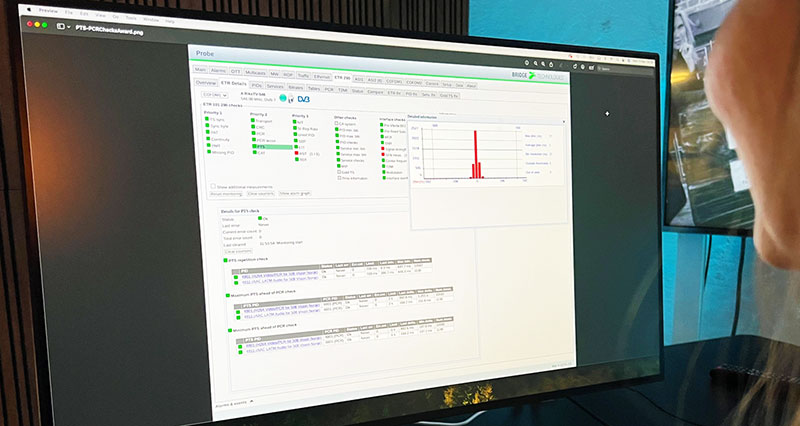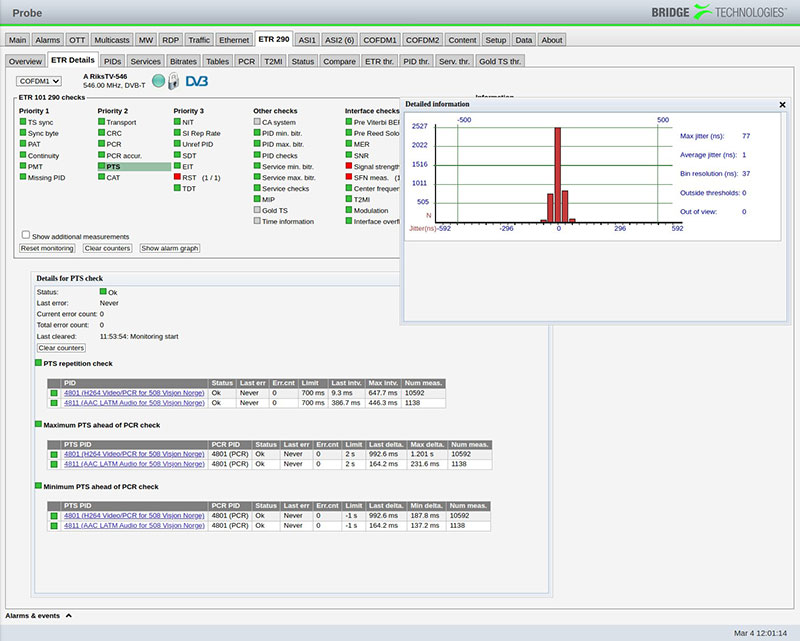Bridge developed two new PTS/PCR time checks that perform precise analysis of misalignment and clock slippage and help detect buffer timing issues that earlier checks may have missed.

Addressing a key aspect of IP broadcast, packet behaviour and timing, Bridge Technologies have developed two new PTS/PCR time checks capable of performing in-depth analysis of misalignment and timing (or clock) slippage. These new checks help to detect elusive buffer timing issues that – under traditional PTS/PCR comparison checks included in as part of the standard TR 101 290 checks – might previously have been missed. These checks will be available as part of the company’s new version 6.2 upgrade, available for all Bridge Technologies’ probes, including their main VB330 IP monitoring probe.
While IP has various advantages for audio-visual delivery compared to traditional broadcast, such as scalability, flexible routing, security and remote management, the complexity of timing issues associated with IP can cause issues in terms of synchronisation, not only between audio and video, but also ancillary elements like subtitles. These individual assets generally maintain their own PTS (Presentation timestamp) within each stream, which can then be referenced against the PCR (Program Clock Reference) to ensure alignment.
Clock slipping usually refers to repetition or deletion within a synchronous data stream owing to differences in the read and write rates at a buffer. Slippage may result if equipment mechanisms such as a buffer store cannot accommodate differences between the frequencies of the incoming and outgoing signals, which happens when the timing of the outgoing signal is not based on the incoming signal timing.

Although clock slip is a part of most major IP monitoring systems because of the mandatory PTS Repetition check that forms part of the ETSI TR 101 290 specification, analysis may only indicate the presence of slippage without diagnostic or predictive power. In single-frequency terrestrial networks (SFN) or in head-end satellite ingest systems particularly, conventional clock slippage monitoring methods may lack the necessary functionality.
The two new standard checks Bridge has developed aim to address this issue. Through a more sophisticated understanding of difference values and their interactions and patterns, alarm trigger thresholds can be configured to identify and alert engineers to time slippage skew in situations where it is harder to detect – for instance, subtitling – and thus promptly and accurately predict errors.
Chairman Simen K. Frostad commented, “This new PTS-PCR check and alarming system is found only in the Bridge suite of probes, and provides a much greater level of insight into the behaviour of the network and potential timing sync issues. Its development is a function of our understanding of packet behaviour, developed over the course of 20 years as we have championed the case for IP adoption in the broadcast industry.”
Bridge Technologies will be demonstrating the potential of these two new clock checks and associated alarms at the upcoming NAB2024 show in Las Vegas. www.bridgetech.tv




















